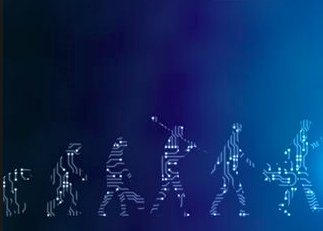How Can Leaders Take A Critical Look At Themselves? – Part 2
Written By: Cahide Akkuzu
Reading time: approximately 6 minutes
In my previous article, I pointed towards the importance that leaders critically question themselves in order to stay relevant and be effective while facing the challenges of the modern world that we are living in. We looked at the adult development theory and the levels of mental complexity in adults allowing them to question themselves. The more an adult is advancing in their level of mental complexity, the more an adult is able to question their own ‘I’. You can read the previous article from this link:
So, how can adults make that transition to higher levels of mental complexity? This is the hot topic that I will be addressing today. There is a very important factor that leaders need to take into consideration while starting their journey to question and change themselves: their internal resistance to change! We are all human beings and have a natural tendency to stay in our comfort zones and to stick to our habits! Research shows that only one out of nine cardiac patients can change their lifestyles to protect their health after their surgery. We expect leaders to take a critical look at themselves, to change their attitude and behaviors. This is not an easy task! We will be looking into how the neuroscience of change can help leaders go through this journey of change.
In the last 30 years, research that has been done in psychology and neuroscience revealed a lot of new and comprehensive information about human nature and behavior changes. Advanced monitoring technologies made it possible to see how the human brain gets stimulated in different situations, how it reacts, and when it changes psychically. The result is that there are new theories that give us a new understanding of how our brain works. Knowing about these theories helps leaders to develop new strategies to overcome their own ‘natural’ resistance to change and to develop new behaviors. There are a lot of books and articles that are written about this topic. One of my favorite sources is the NeuroLeadership Institute https://neuroleadership.com. Under the leadership of Dr. David Rock, the NeuroLeadership Institute brings scientists and leadership development experts together to find new scientific approaches about leadership development.
The recent findings in neuroscience help us to understand what makes it so hard for us to change. Let’ s take a closer look at the reasons why we resist change, and to what happens in our brain when we want to change. Our pre-frontal cortex enables us to learn, connect the dots, and analyze, it acts like a conscious command center that performs higher intellectual functions. When we see something new, when we acquire new information, when we analyze a situation, when we are curious, when we are learning something new, when we build connections, it comes in and spends significant effort to compare this new information to the existing ones. Another part of our brain, the basal ganglia, works as a storage that keeps our knowledge and habits, it operates “automatically” with little effort and is very active in habitual routine work. The pre-frontal cortex gets tired easily and has a limited capacity. When the pre-frontal cortex learns something, acquires a skill, something becomes routine or forms a habit, it sends this to the basal ganglia, the habit center to store them. This is good for the pre-frontal cortex because it frees up cognitive resources. On the other hand the basal ganglia takes over the repetitive tasks and performs them successfully with very limited effort. With this process, we create a comfort zone to ourselves. We learn driving with our pre-frontal cortex, then pass it to basal ganglia and drive ‘automatically’. If we are used to drive a car with an automatic transmission and suddenly find ourselves trying to drive a car with a manual transmission, we experience symptoms of stress. The basal ganglia always compares what is happening at the moment with what it is expecting to happen. When the basal ganglia experiences something different than the information or habit that it already has, it gives an error signal! The basal ganglia sends this error signal to the part of our brain called amygdala. Our amygdala is our primitive brain which takes over automatically as a reflex when we face danger, no matter whether this danger is real or just perceived, physical or emotional. It makes sure that we survive! It is our primitive survival instinct to protect us from that which is unknown. So, the moment our basal ganglia experiences something new or unknown, our amygdala takes over to protect us. If our pre-frontal cortex is tired or not alert at this moment, we drift back to our old habits! So, from the perspective of how our brain works, we have one foot on the gas wanting to change, but unconsciously our other foot is on the brakes when our amygdala is hijacking our pre-frontal cortex, our rational highly developed command center! Our brains’ resistance to change works the same for all of us. Leaders are expected to be a role model for change. Leaders are expected to take a critical look at themselves, to question themselves, to decisively go through their own change journey and to show leadership by supporting the change journey of others and the organization that they are leading. As much as this is hard, it is also possible and there are many successful examples.
A very important finding in neuroscience called ‘Neuroplasticity’ is the ability of our brain to transform itself into any shape it desires. This is a breakthrough finding, because now we know that our destiny does not consist of only our genes and our environment. Neuroplasticity helps us to change! The lithography “Drawing Hands” that was created by M. C. Escher in 1948, shows two hands creating themselves by drawing themselves in three dimensions. The self-creation paradox in Escher’s work, shows the definition of neuroplasticity, the capacity of the brain to shape itself physically, its capacity to improve, change, and adapt. Neuroplasticity is the capacity of the brain to create and change itself as its own will.
To be licensed as a taxi driver in London, drivers need to prove that they know the London map, which has 25 thousand streets in downtown, by heart. One of London University neuroscientists Eleanor Maguire studied London taxi drivers, she examined the hippocampus, which is the visual memory center of their brain. She compared the hippocampus of the drivers before and after the exam and found that the hippocampi of the taxi drivers had grown significantly in the process. After memorizing 25 thousand streets, the drivers’ grey matter had increased in the area of the brain in which they used more brain power.
The striking and promising reality, coming from research about neuroplasticity, is that our brain wires can adapt themselves into new situations incredibly fast, we even can build “muscles” in the parts of our brains where we develop new skills. Furthermore, our brain can not only rewire its existing circuits to adapt to new situations, our brain can even grow totally new circuits to enhance its abilities. Just like Escher’s “Drawing Hands”, we can decide who and what we want to become and with focused practice create ourselves!
The neuroplasticity ability of our brain enables leaders to successfully change themselves. Let’s look at how. The only way for us to change is to focus our attention consciously on that what we want to change, to practice, to reflect on our learning while practicing, to develop insights from our learning, and then continue to practice in a way that supports us building that new ‘muscle’. Like we see in the London taxi drivers’ example, when we focus consciously on something, when we constantly use those brain circuits actively, then we can develop that part of our brain physically. Leaders with expertise in a specific area, like finance, human resources, sales, marketing or operations may have over the years created some very strong ‘muscles’ in some areas of their brain. Looking at the same situation, each of these leaders may notice different aspects and may offer a different thinking and perspective.
Research also shows that our expectations, attitudes, our mind maps, our personal outlook has a tremendous effect on our perception. For example, a leader who sees clients as people who only create problems, will only hear complaints of these clients. On the other hand, a leader who sees clients as respectful and gifted people can take their feedback as valuable information that can be used to improve goods or services. We grow and nurture what we focus on. If we focus on the negatives, we see only the negatives, if we focus on the positives, we create more circuits and ‘muscles’ around creating more positives. So, the key for a leader to change is to focus on the right thing and to practice. In a business environment with so many stimuli and where our amygdala always gets triggered, it is not easy to focus. But we can make focusing our nature by again using the neuroplasticity ability of our brain. Research shows that with mindfulness exercises we can physically improve our pre-frontal cortex, and physically weaken our amygdala to lessen our resistance against change and to lessen the stress that comes with change.
Sara Lazar, a Harvard University neuroscience expert, studied people who took an 8-week meditation class. These people have meditated 27 minutes on average every day and reported decreases in feelings of stress over that time.
Sara Lazar also studied these people’s brains and found some physical changes. The brain cell volume of the pre-frontal cortex had grown, and the brain cell volume of the amygdala had decreased. In a follow-up research, she saw that their stress levels continued to be at a low level. She concluded that a physical change in the brain shows its effects for a long time.
We can train our pre-frontal cortex and focus on practicing new behaviors and attitudes and successfully achieve our goal to change. Even simple exercises can help us to strengthen our pre-frontal cortex. The most important thing is to remember to stop the ‘autopilot’ in our mind and just to focus on one thing, maybe just to follow our breath for a few moments.
Above all, leaders need to become friends with themselves and need to believe in their power to create what they desire in every part of their life, just like Escher’s “Drawing Hands”.
In this second part of the article, we have looked into how the neuroscience of change can help leaders to successfully achieve their goals to change. In part three of this article, we will be looking at another dimension of this topic.
Resources:
NeuroLeadership Institute
Context Professionals Corporate Coaching and Consulting
https://www.contextprofessionals.com/en/



















